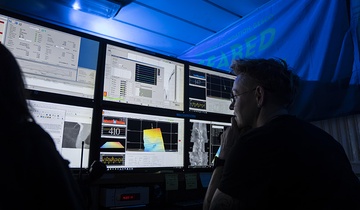Scientists track Samoa and Vanuatu tsunami
Recent tsunami generated by earthquakes off Samoa and Vanuatu were detected by 12 sea-level gauges around New Zealand, revealing delays of up to 15 hours in local occurrence of peak waves. Using data from the Vanuatu tsunami, NIWA scientists demonstrated new hydrodynamic computer models that may soon be able to predict the effects of regional tsunamis in near real-time.
Samoa tsunami
The tsunami generated by a Magnitude 8.0 earthquake off Samoa on 30 September (NZST) was detected at sea-level gauges around New Zealand. Analysis by NIWA Principal Scientist Rob Bell showed that peak waves at Christchurch (Sumner) and Port Taranaki didn’t occur until more than 12–13 hours after the first tsunami wave arrived.
The delay in peak waves from a distant tsunami source is due to reflections off continental shelves, coastal headlands, and from much slower-travelling waves that get trapped on the coast and propagate along the coastline, diminishing slowly, says Dr Bell.
The heights of the peak waves experienced after the Samoa tsunami, while relatively small, can pose a hazard for navigation. They may cause strong currents in harbours and restricted estuary channels – such as those observed at Tutukaka – and strong surging up and down beaches that cycles every 10 minutes or so.
Full analysis of the Samoa tsunami’s impact on New Zealand’s shores
Sea-level monitoring network coordinated by NIWA.
New Zealand tsunami gauge network on GeoNet
Vanuatu tsunami
A smaller tsunami was generated after the northern Vanuatu Islands Magnitude 7.6 earthquake on 8 October. Tsunami waves were was also recorded on the west coast of New Zealand, having propagated down the Lord Howe Rise, which acted as a waveguide. Peak waves (crest-to-trough) of 0.11-0.25 m were recorded at various sites on the west coast 11-15 hours after the earthquake.
Modelling tsunami effects in near real-time
NIWA hydrodynamics specialists Emily Lane and Philip Gillibrand modelled the Vanuatu tsunami using NIWA’s hydrodynamic model RiCOM within 4.5 hours of the quake. This demonstrates how it could be possible to monitor tsunami threats in near real-time.






